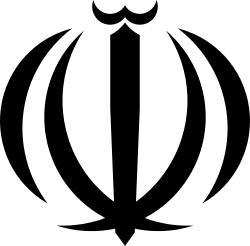Mohammad-Ali Rajai
| Mohammad-Ali Rajai | |
|---|---|
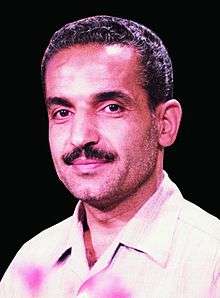 Portrait of Mohammad-Ali Rajai | |
| 2nd President of Iran | |
|
In office 2 August 1981 – 30 August 1981 | |
| Supreme Leader | Ruhollah Khomeini |
| Prime Minister | Mohammad-Javad Bahonar |
| Preceded by | Abolhassan Banisadr |
| Succeeded by | Ali Khamenei |
| 47th Prime Minister of Iran | |
|
In office 12 August 1980 – 4 August 1981 | |
| President | Abolhassan Banisadr |
| Preceded by | Mehdi Bazargan |
| Succeeded by | Mohammad Javad Bahonar |
| Minister of Foreign Affairs Acting | |
|
In office 11 March 1981 – 15 August 1981 | |
| President | Abolhassan Banisadr |
| Prime Minister | Himself |
| Preceded by | Karim Khodapanahi (Acting) |
| Succeeded by | Mir-Hossein Mousavi |
| Minister of Education | |
|
In office November 1979 – 12 August 1980 | |
| Prime Minister | Mehdi Bazargan |
| Preceded by | Gholam Hossein Shokohi |
| Succeeded by | Mohammad Javad Bahonar |
| Member of the Parliament of Iran | |
|
In office 28 May 1980 – 1 August 1981 | |
| Constituency | Tehran, Rey, Shemiranat and Eslamshahr |
| Majority | 1,209,012 (56.6%) |
| Head of Mostazafan Foundation | |
|
In office 17 September 1980 – 30 August 1981 | |
| Appointed by | Ruhollah Khomeini |
| Preceded by | Alinaghi Khamoushi |
| Succeeded by | Mir-Hossein Mousavi |
| Personal details | |
| Born |
15 June 1933 Qazvin, Persia |
| Died |
30 August 1981 (aged 48) Tehran, Iran |
| Resting place | Behesht-e Zahra |
| Political party |
Islamic Republican Party Islamic Association of Teachers of Iran |
| Other political affiliations |
Freedom Movement (Until 1979)[1] People's Mujahedin (Until 1975) |
| Spouse(s) | Ateghe Sediqi (1958–1981) |
| Children | 3 |
| Alma mater | Tarbiat Moallem University |
| Signature |
 |
Mohammad-Ali Rajai (Persian: محمدعلی رجائی; 15 June 1933 – 30 August 1981) was the second President of Iran from 2 to 30 August 1981 after serving as prime minister under Abolhassan Banisadr. He was also minister of foreign affairs from 11 March 1981 to 15 August 1981, while he was prime minister. He was assassinated in a bombing on 30 August 1981 along with prime minister Mohammad-Javad Bahonar.
Early life and education
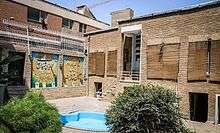
Mohammad-Ali Rajai was born on 15 June 1933 in Qazvin, Iran.[2] His father, Abdulsamad, died when he was 4 years old after which he lived with his mother and brother. Rajai grew up in Qazvin, and moved to Tehran in 1946. After moving to Tehran, he had a close relationship with the anti-Shah groups and parties. He was known with Ayatollah Mahmoud Taleghani. In 1958, he moved to Bijar for a short period, but after a year, he moved back to Tehran and graduated with a degree in education from Tarbiat Moallem University in 1959. He became a member of the People's Mujahedin of Iran (MKO).[3] In 1960, he also joined Freedom Movement of Iran.[2][4] He was arrested by the Shah's forces for three times for his opposition activities.[4] Rajai was finally detained in May 1974, but was set free after four years.
Political career
Before the Islamic revolution
Rajaei spent his preliminary studies in Qazvin. His father died when he was four years old. He traveled to Tehran in 1948 and he was employed by the air force one year later. While he could obtain his diplomat degree, he resigned from the air force. During those years he became familiar with Ayatollah Taleghani and the Fadaeian group. He became a mathematics teacher in Bijar in 1955. He continued his studies in Tehran where he had the opportunity to get familiar with Mehdi bazargan and Sahabi. He completed his education in mathematics in 1959. He was a teacher in Khvansar in 1960. He continued his education in the field of statistics at the master level meanwhile he taught at Kamal school in Tehran. He became a member of Freedom Movement of Iran in 1962 and married at that time. He was arrested in 1962 and was imprisoned for fifty days by SAVAK. After release, along with Muhammad Javad Bahonar and Jalal Al Din Farsi, he became concerned with political and cultural activities. He was arrested for the second time in 1972 because of co-operation with Mujahedin group and was imprisoned for 4 years. Finally, he was released in 1979 when the Islamic revolution of Iran was reaching its last days.[5]
After the Islamic revolution
He was actively involved in the Iranian Revolution and was a leader in the movement to purge Iranian universities of American and European influences, which was later called the Cultural Revolution. Rajaei appointed to important occupations after the victory of Islamic revolution. The occupations were as follow:
- As the minister of Ministry of Education (Iran)
- As the candidate of Islamic Consultative Assembly
- As the prime minister
- As the president[6]
Ministry of Education
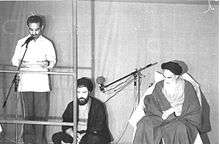
At the beginning, Gholam Hosein Shokohi was the minister of education, and Rajaei was one of his chancellors. After Shokohi's resigning due to illness, Muhammad Ali Rajaei was appointed as the supervisor of the ministry of education. He was introduced by Muhammad Javad Bahonar, and he became the supervisor of education ministry from 18th shahrivar month to 7th mehr at 1357 solar. Finally, Mehdi Bazargan presented him as the minister of education in his cabinet. His programs in the ministry of education included fair distribution of facilities, fair distribution of finance among staffs, reforming of centers of educating teachers, creating a suitable pedagogical system for Muslim society, developing of Islamic ethics among teachers and pupils, creating a good relation between parents and teachers and respect to dignity of teachers according to Islam. These schedules were very important for Rajaei, and he tried to realize them. He was in charge of the ministry for nine months. The most important achievements were the consistency of all schools and also trying to do away with discrimination and differences. He also tried to change the contents of educational books and also made attempts of Islamization of their contents.[7]
Appointment as Prime Minister
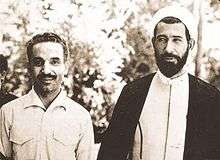
In 1979, Rajai left the Freedom Movement.[2] Following the Iranian Revolution, he was appointed minister of education in the government of Mehdi Bazargan, and although Bazargan's cabinet resigned on 6 November 1979, he did not resign and remained in the post until 12 August 1980 when he became prime minister. Following the presidency of Bani Sadr, after 5 months, he nominated Rajai for the position, and parliament voted him in. He appointed Khodapanahi as foreign minister, Mohammad-Reza Mahdavi Kani as interior minister and Javad Fakori as defence minister. During his prime ministership, the Iran–Iraq War started and his government's first policy became the "victory and defence". He was in office until 2 August 1981 when he became the second president of Iran.
Presidency
Bani Sadr was impeached on 22 June 1981 by parliament, and Khomeini held a Provisional Presidential Council by 6 people headed by Mohammad Beheshti and later Abdul-Karim Mousavi Ardebili. Rajai was one of the members of that Council. He nominated himself for the presidential election in 1981. He was the first president from the Islamic Republican Party after winning 91% of the votes. He officially became the president after the Oath of Office in 2 August 1981.[8] He named Mohammad-Javad Bahonar to the Parliament to become the next prime minister. Parliament voted in to Bahonar and he formed a new government.
Assassination
On 30 August 1981, President Rajai held a meeting of Iran's Supreme Defence Council, along with the Prime Minister Mohammad Javad Bahonar. Witnesses later stated that a trusted aide brought a briefcase into the conference room, set it between the two leaders, and then left. Another person opened the case, triggering a bomb that set the room ablaze and killed Rajai, Bahonar, and three others.[9] This attack occurred two months after the Hafte Tir bombing. The assassin was identified as Massoud Keshmiri, an operative of the People's Mujahedin of Iran (also known as the MKO, MEK and PMOI), who had infiltrated the Prime Minister's office in the guise of a state security official. Rajai was buried in Behesht-e Zahra.
Political positions
His political programs were based on constitutional law with a position of privilege for Islam—he insisted on that those who would be in control of the state be Muslim. He also emphasized on the Velayate Faghih and believed that the Islamic government have to cooperates with revolutionary institutions like Islamic revolutionary guard, Islamic courts etc. He respected the freedom of all peoples as far as those freedoms didn't deny Islamic law. He also tried to create a consistent government in his tenure.[10]
References
| Wikimedia Commons has media related to Mohammad-Ali Rajai. |
- ↑ Houchang E. Chehabi (1990). Iranian Politics and Religious Modernism: The Liberation Movement of Iran Under the Shah and Khomeini. I.B.Tauris. p. 87. ISBN 1850431981.
- 1 2 3 Houchang E. Chehabi (1990). Iranian Politics and Religious Modernism: The Liberation Movement of Iran Under the Shah and Khomeini. I.B.Tauris. p. 87. ISBN 978-1-85043-198-5. Retrieved 27 August 2013.
- ↑ Ostovar, Afshon P. (2009). "Guardians of the Islamic Revolution Ideology, Politics, and the Development of Military Power in Iran (1979–2009)" (PhD Thesis). University of Michigan. Retrieved 26 July 2013.
- 1 2 "Mohammad Ali Raja'i". Encyclopædia Britannica. Retrieved 27 August 2013.
- ↑ Amin Moarref (1361). "The biography of martyrdom teachers: Shahid rajaei". Roshde Moallem. p. 9.
- ↑ "پرتال جامع علوم انسانی - شهید محمدعلی رجایی و دوران پس از پیروزی انقلاب اسلامی". Ensani.ir. Retrieved 10 January 2017.
- ↑ "مرکز اسناد انقلاب اسلامی - کارنامه شهیدان رجایی و باهنر در وزارت آموزش و پرورش". Irdc.ir. Archived from the original on 3 September 2013. Retrieved 10 January 2017.
- ↑ "Rajai Sworn In; Bani-Sadr Predicts Revolt", Pittsburgh Press, 2 August 1981, p. A-8
- ↑ Facts on File Yearbook 1981
- ↑ Ali Ahmadi (1384). "How created a consistent government". Gozaresh. pp. 14–18.
| Political offices | ||
|---|---|---|
| Preceded by Mehdi Bazargan |
Prime Minister of Iran 1980–1981 |
Succeeded by Mohammad Javad Bahonar |
| Preceded by Karim Khodapanahi (Acting) |
Minister of Foreign Affairs (Acting) 1981 |
Succeeded by Mir-Hossein Mousavi |
| Preceded by Abulhassan Banisadr |
President of Iran 1981 |
Succeeded by Ali Khamenei |
| Party political offices | ||
| Preceded by Hassan Habibi |
Islamic Republican Party nominee for President of Iran July 1981 |
Succeeded by Ali Khamenei |
